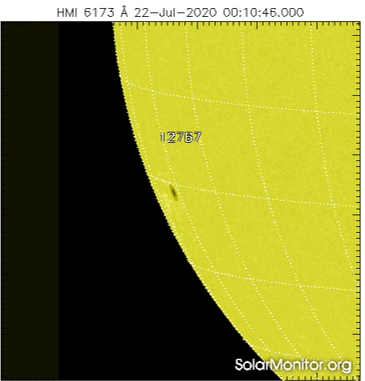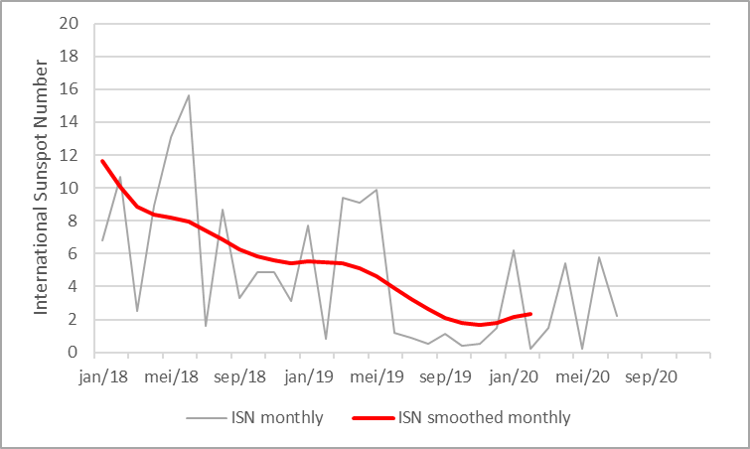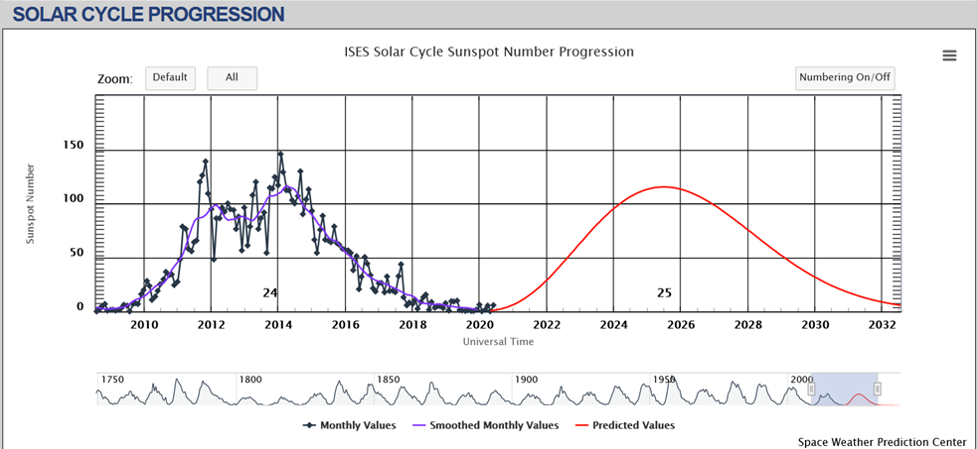A reasonably sized sunspot rounded the southeast solar limb on 21 July. NOAA 2767 has a high latitude (-21 degrees) and a magnetic polarity that identify it as a member of the new solar cycle 25 (SC25). The region has been quiet and has not produced any flaring above the B-class level... so far.

This sunspot group once more confirms that the new solar cycle finally has started. The (preliminary) monthly and monthly smoothed sunspot numbers (SILSO) seem to indicate that the cycle minimum took place in November 2019 (see the graph underneath), bottoming out at 1.7. There may be a slight difference in time and value pending the smoothing formula used. At any rate, it would mean that the previous solar cycle (SC24) had an average duration of about 11 years, which is a typical value but still relatively short for such a low activity cycle.

The evolution of SC25 can be followed against the forecast at NOAA's dedicated solar cycle page. The forecast comes from the Solar Cycle Prediction Panel representing NOAA, NASA and the International Space Environmental Services (ISES). This amounts to the "official" forecast for the solar cycle. The Prediction Panel forecasts the sunspot number expected for solar maximum and has predicted Cycle 25 to reach a maximum of 115 occurring in July 2025. The error bars on this prediction mean the panel expects the cycle maximum could be between 105-125 with the peak occurring between November 2024 and March 2026. There's a similar set-up for the solar 10.7 cm radio flux.






